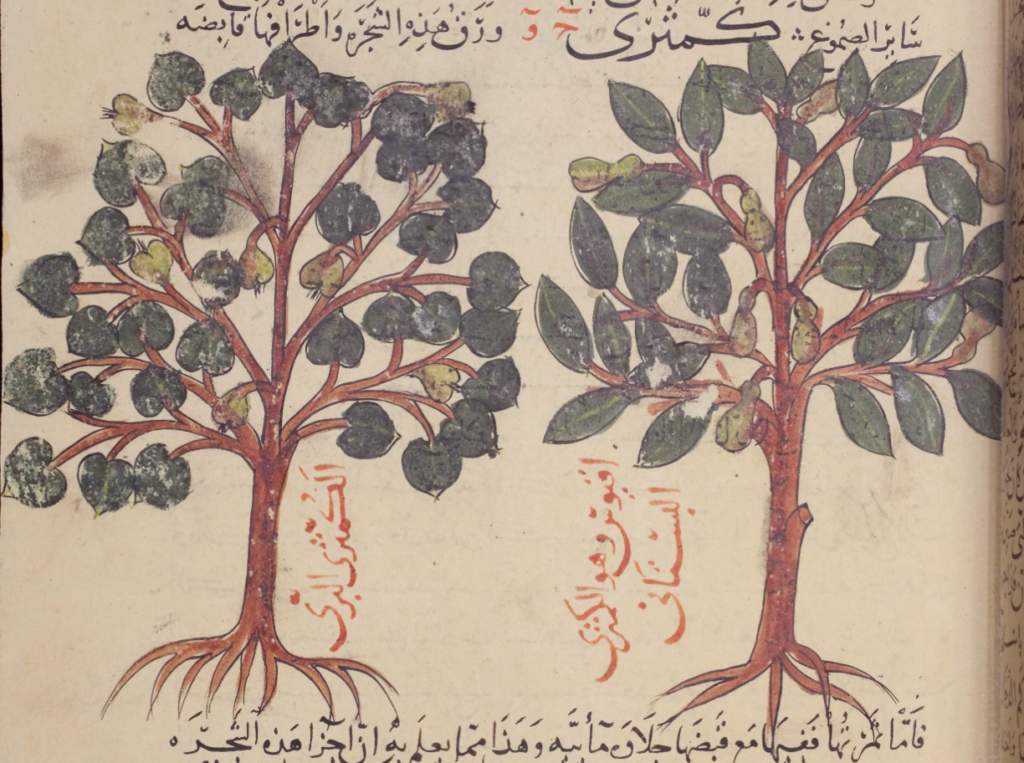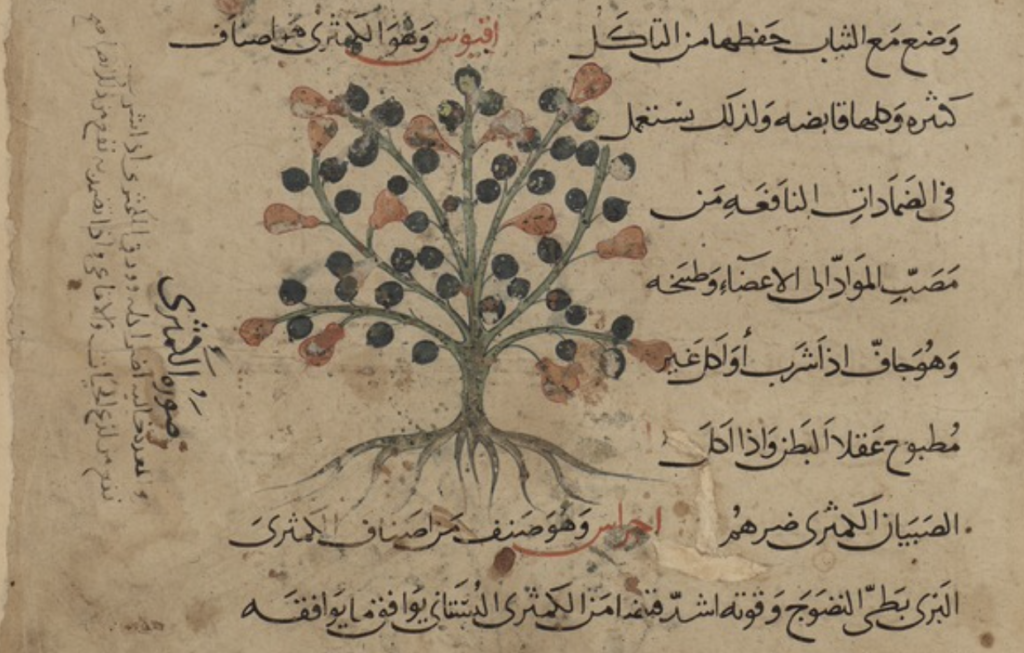Pears (Pirus communis)– like their cousin the apple – originated in the Caucasus and northeastern Anatolia. The fruit was already cultivated in Ancient Greece in the first millennium BCE, but it only spread throughout the Mediterranean in the Roman period. The Greek botanist Theophrastus (d. 287 BCE) discussed various techniques for growing them, whereas the naturalist Pliny the Elder (d. 79 CE) referred to forty-one varieties being available in Rome. Dioscorides recommended pears as an antidiarrheal medicine, but said that they are harmful when eaten on an empty stomach. More mysteriously, he claimed the ash of pear tree wood was an effective remedy for those choking from mushrooms, while cooking pears with mushrooms removed the latter’s harmful properties. Pears were much more popular than apples at the time but because pears can spoil very easily, they were often preserved after drying them, or in grape syrup, and the Romans even made a pear vinegar.
In the Arabic-speaking world, pears (كمّثرى, kummathra) were grown in a number of areas, especially the Levant, but also in Egypt. Sources also refer to Chinese, Sijistani and Khorasani pears as being particularly good varieties. Pears appear only once in the medieval Arabic culinary literature, as an optional ingredient in a 13th-century Andalusian fruit pudding.
Muslim physicians agreed with Dioscorides’ assessment of pears, but also recommended them to strengthen the stomach and suppress thirst. The fruit was used in a digestive conserve, made with sweet unripe pears submerged in honey and then slightly cooked.
In the Syrian dialect, pears are known as ‘ijjāṣ‘ (إجّاص), the usual word for plum in other varieties.


